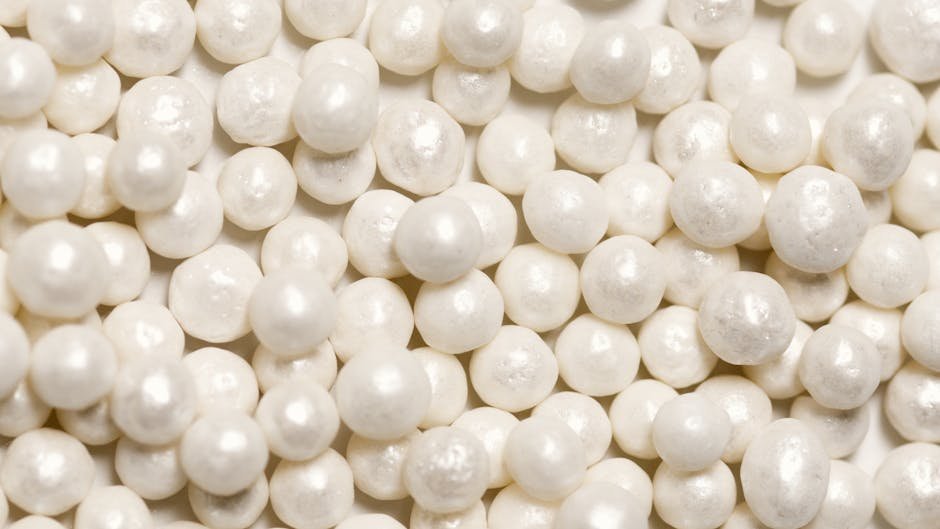
How Many Seconds Are in a Year?
# Table of Contents
Have you ever pondered how many seconds exist in a year? The answer is quite interesting and involves a simple calculation. First, let’s break down the time into smaller units to understand how they convert into seconds.
Aiotechnical.Com Health & Beauty All Details | Snow Rider Unblocked: Enjoy the Best Free Snowboarding Game
Aiotechnical.Com Health & Beauty All Details | Snow Rider Unblocked: Enjoy the Best Free Snowboarding Game
Aiotechnical.Com Health & Beauty All Details | Snow Rider Unblocked: Enjoy the Best Free Snowboarding Game
Aiotechnical.Com Health & Beauty All Details | Unraveling Sportsurge: A Comprehensive Analysis of Online Sports Streaming Platforms
To find out how many seconds there are in a year, we begin by examining the following units of time: seconds, minutes, hours, days, and finally years. Here’s the basic conversion:
1. There are 60 seconds in a minute.
2. Each hour contains 60 minutes. Therefore, one hour has 60 x 60, which amounts to 3,600 seconds.
3. Each day is made up of 24 hours, resulting in 24 x 3,600, equating to 86,400 seconds in a single day.
4. Finally, we consider that a standard year typically has 365 days. Therefore, the calculation for seconds in a year would be: 365 days x 86,400 seconds/day.
Doing the math, you find that:
365 x 86,400 = 31,536,000 seconds.
That’s a staggering number of seconds! It might be mind-boggling to think about how much time that truly represents.
However, it’s important to highlight that there are variations in how we calculate seconds based on factors such as leap years. Leap years, which occur every four years, add an extra day to the calendar—February 29th. Consequently, a leap year has 366 days, resulting in:
366 x 86,400 seconds = 31,622,400 seconds.
This straightforward yet profound calculation emphasizes the sheer volume of time we encompass in a single year.
Aside from these numerical values, considering how we utilize our seconds is crucial. Time, as they say, is precious. Being aware of how many seconds you have in a year may inspire you to think about how to effectively spend that time—whether it be making memories with family, pursuing hobbies, or simply enjoying life.
Now that we’ve examined the fundamental aspects of seconds in a year, think about your daily activities. How can you make the most of the 31,536,000 seconds you have? Would you like to spend them playing games with family, exploring your local area, or cooking a meal together?
Understanding the value of seconds in one year can motivate us to prioritize what truly matters in our lives.
Introduction
Do you ever wonder how many seconds are in a year? Understanding this measurement can not only satisfy your curiosity but also improve your math skills in time conversions. It’s a simple calculation that reveals the vastness of time we often take for granted. In this article, we will explore the breakdown of time into various units and how these units ultimately lead to the answer of how many seconds make up a year.
Understanding Time Measurement
Time is a crucial concept in our daily lives, guiding everything from our routines to significant events. The concept of measuring time has evolved over centuries, facilitating human activities and helping societies function smoothly. To determine how many seconds are in a year, we need to utilize what is known as a conversion factor. This factor allows us to convert larger units of time into smaller ones. By knowing that there are different units involved—such as minutes, hours, and days—we can calculate the total number of seconds that comprise a year.
Units of Time
To begin our calculation, let’s establish the basic units of time. First, we know that one minute consists of 60 seconds. Then, each hour is composed of 60 minutes, translating to 3,600 seconds per hour. Next, there are 24 hours in a single day, which gives us 86,400 seconds in a day (24 hours x 3,600 seconds/hour). Understanding these combinations forms the foundation upon which we can build our calculation for a year.
When discussing a non-leap year, which includes 365 days, we multiply the number of seconds in a day (86,400) by the total number of days in a year (365). Performing this calculation gives us a total of 31,536,000 seconds within one year. This figure highlights just how intricately time is woven into the fabric of our lives, as we often overlook these smaller units while planning our days, months, and years. The conversion of seconds emphasizes the importance of time and the need to manage it wisely, whether it be for mundane daily tasks or for special moments with family and friends.
Basic Time Unit Conversions
Seconds to Minutes
In your journey of understanding how many seconds are in a year, it’s essential to start with the basic unit conversions. You know that one minute equals 60 seconds. When you think about it, this simple conversion reminds you of the fundamental building blocks of time. When you’re pressed for time, understanding this basic relationship can help you calculate quickly how much time you have left. For example, if you have 240 seconds, dividing by 60 tells you that you have 4 minutes to spare. By mastering the conversion from seconds to minutes, you become more adept at managing your time effectively.
Minutes to Hours
Next, let’s move on to converting minutes into hours. You recognize that there are 60 minutes in an hour. When you’re planning your day, knowing how to convert minutes into hours can significantly impact how you schedule your activities. For instance, if you’re trying to allocate 180 minutes for a task, simply dividing by 60 reveals that you need 3 hours for completion. This understanding not only aids in your daily planning but also reinforces the connection between different units of time. Employing these conversions becomes a vital skill as you seek to allocate your time wisely and enhance productivity throughout your day.
Time management often requires juggling multiple activities, and these conversions make it easier to understand the relationships between different time measures. As you think through your daily responsibilities, you might encounter various scenarios where knowing how to convert seconds to minutes, and minutes to hours becomes crucial. Whether you’re timing a presentation or scheduling a meeting, this knowledge empowers you to function smoothly within the constraints of time.
Understanding these conversions ultimately leads back to the bigger picture of how many seconds are in a year. Each second, minute, and hour brings you closer to appreciating the entire year’s worth of time. By practicing these conversions, you are not only preparing yourself for more complex calculations but also learning to value the seconds that comprise your life. The beauty of time lies in its precision and the way it influences every aspect of your day-to-day life. Keep exploring the relationships within time units, and you’ll find yourself better equipped for various challenges in life.
Calculating Seconds in a Day
Hours to Seconds
To understand how many seconds are in a year, you must first break down the larger units of time into seconds. Start with your knowledge that one hour consists of 60 minutes. Since each minute contains 60 seconds, you can calculate how many seconds are in an hour. By multiplying the number of minutes by the seconds per minute—60 x 60—you find that there are 3,600 seconds in one hour. This is an essential building block in your quest to determine how many seconds are in a year.
Now that you know the total seconds for an hour, you can extend this to a full day. There are 24 hours in a day, so you would multiply the number of seconds in an hour (3,600) by 24 (the number of hours in a day). This calculation yields 86,400 seconds in one day, a significant amount that often goes unnoticed in the hustle of daily life. Each second counts, and recognizing this total emphasizes the fleeting nature of time. It is critical to grasp this concept as you advance to the year, where the interplay of these units becomes even more fascinating.
Formula Application
In finding the total number of seconds in a year, you will apply the calculations you’ve made for seconds in a day. For a common year, which contains 365 days, the formula you need is straightforward: 86,400 seconds per day multiplied by the 365 days in the year. By performing this calculation—86,400 x 365—you arrive at the total of 31,536,000 seconds. This large number showcases just how much time you actually have at your disposal throughout a year, and it can serve to inspire you to make the most of each second.
Moreover, if you were to consider a leap year, which includes an additional day, your calculation would slightly adjust. It would then be 86,400 seconds multiplied by 366 days, resulting in 31,622,400 seconds for that year. Recognizing these distinctions is crucial for anyone interested in improving their understanding of time measurement. Each leap year not only accounts for an extra day but also adds an additional 86,400 seconds, reflecting the intricacies of our calendar system. Understanding these fundamental conversions immensely helps in grasping the broader context of time and its management in your life.
Calculating Seconds in a Year
Days to Seconds
To grasp the concept of how many seconds are in a year, it is essential to explore the conversion of days into seconds. Starting from the fundamental conversions, you already know that there are 24 hours in a day. Each hour consists of 60 minutes, and each minute contains 60 seconds. By combining these figures, you can convert days into seconds with straightforward multiplication. You calculate the total seconds in one day as follows: 24 hours multiplied by 60 minutes per hour, and then by 60 seconds per minute. This results in a total of 86,400 seconds in a single day. Recognizing this total is vital, as it emphasizes the amount of time that goes by each day, often unnoticed in our busy lives. Every second counts, and understanding this calculation can inspire you to appreciate each moment more fully.
Detailed Calculation Process
When you want to determine the total number of seconds in a year, you’ll use the number of seconds in a day as a cornerstone for your calculations. In a common year, which consists of 365 days, the formula becomes clear: you take the total seconds in one day, 86,400 seconds, and multiply it by 365 days. This calculation—86,400 multiplied by 365—brings you to the total of 31,536,000 seconds in a standard year. This large number may surprise you, illustrating just how much time is available over the course of a year. It emphasizes the significance of how we choose to utilize those seconds, potentially motivating you to engage in meaningful activities.
In contrast, should you consider a leap year, you must account for the extra day. A leap year consists of 366 days, and therefore, the seconds counted would be calculated differently. You would again start with the daily total of 86,400 seconds, but multiply that by 366 days. This adjustment results in a total of 31,622,400 seconds for a leap year. Grasping this distinction between a common year and a leap year is paramount for a deeper understanding of time measurement and the calendar system. Additionally, you can reflect on how these calculations can impact your perspective on time management and planning, underscoring the importance of effectively utilizing every second available to you throughout the year.
Variations in Year Length
Leap Year Considerations
When discussing the total number of seconds in a year, it’s essential to consider the variations in year length due to leap years. A common year comprises 365 days, but every four years, an additional day is added to our calendars, creating a leap year. This change is implemented to synchronize our calendar year with the solar year, which is approximately 365.24 days long. Therefore, while you routinely calculate the number of seconds in a standard year as 31,536,000, leap years introduce an extra day—February 29—resulting in additional time to measure. Leap years arise out of necessity to correct the discrepancy that occurs over time, ensuring that our seasons start and end on time, aligning closely with astronomical events such as the solstices and equinoxes.
Adjusted Calculations for Leap Years
To adjust for leap years in your calculations, take note that a leap year contains 366 days. Therefore, the total number of seconds in a leap year can be calculated using the same methodology you applied for a common year. Start by recalling that there are 86,400 seconds in a standard day. For a leap year, multiply this figure by 366 instead of 365, resulting in the equation 86,400 x 366. This calculation reveals that a leap year consists of 31,622,400 seconds. Acknowledging this additional time can be invaluable for various practical applications, such as planning events or analyzing time-related data over lengthy periods. By grasping this concept, you can appreciate the subtle but significant differences in how time is measured, ensuring that you consider all aspects of the yearly cycle. This understanding allows for more informed decisions regarding deadlines, personal development goals, and the optimization of time management strategies throughout the year.
Practical Applications of Time Calculation
Time Management Strategies
Understanding the precise number of seconds in a year, including variations for leap years, can greatly enhance your time management strategies. By knowing that you have 31,536,000 seconds in a standard year and an additional 31,622,400 in a leap year, you gain valuable insights into how to allocate your time effectively. This knowledge allows you to plan your goals with more integrity. For instance, by breaking down your objectives into smaller, measurable tasks, you can set clear deadlines that fit within the time you have. It encourages you to prioritize tasks that truly matter, ensuring that you effectively utilize each second you have. With this understanding, you can focus on activities that bring more fulfilment and productivity into your life. In a world where time often seems scarce, applying mathematical precision to your time management allows for better decision-making and a more structured approach to achieving your aspirations.
Importance in Science and Engineering
In fields such as science and engineering, knowing how to calculate the number of seconds in a year, including leap years, is crucial for various applications. For example, when designing systems that rely on precise timing—such as satellite communications or GPS technology—understanding time measurement can be fundamental. These systems depend on time-sensitive calculations that affect their performance and functionality. Scientists may also use time calculations in research projects involving long-term studies, where data collection spans significant periods. Accurate time measurement allows for a more profound understanding of phenomena, helping interpret findings and draw conclusions reliably. Furthermore, engineers designing infrastructure that has to consider seasonal changes and variations in time must factor in leap years to maintain ongoing operations smoothly. The need for accuracy in time management across projects underscores the significance of understanding the total seconds in a year. Your grasp of these concepts not only enhances your theoretical knowledge but also translates directly into practical skills that improve your work efficiency, collaboration, and overall effectiveness in various disciplines.
Fun Facts About Time
Historical Timekeeping Methods
As you delve into the world of time, it’s fascinating to explore the various methods humans have used throughout history to keep track of it. The earliest timekeeping devices were sundials, which utilized the sun’s position in the sky to indicate time. These ancient tools were easy to construct and relied on natural light. However, as societies progressed, more sophisticated instruments came into play. Water clocks, or clepsydra, were among the first mechanical devices to measure time accurately. They functioned by allowing water to flow at a steady rate from one container to another, with the level indicating the passage of time. Eventually, the invention of the mechanical clock in medieval Europe revolutionized timekeeping, leading to standardized hours and more precise time measures that are crucial in modern society. By understanding the evolution of timekeeping, you can appreciate how far we have come in accurately tracking the seconds, minutes, and hours that make up our daily lives.
Time in Different Cultures
Time doesn’t just flow uniformly around the globe; it varies significantly across different cultures, each with its own interpretation and significance. In many Western cultures, time is often viewed linearly—seen as a resource to be managed efficiently. Punctuality is highly valued, reflecting a more rigid approach to time. Conversely, in many Indigenous and Eastern cultures, time might be perceived more cyclically and fluidly, where the emphasis is placed on events rather than rigid schedules. Cultural practices, such as festivals and rituals, are often intricately linked to time, marking the transitions of seasons and agricultural cycles. For example, traditional Chinese timekeeping is based on the lunar calendar, influencing various festive occasions throughout the year. Additionally, the concept of “African Time” signifies a more relaxed attitude towards schedules, prioritizing relationships and communal events over strict timing. Understanding how different cultures perceive and value time can offer you a broader perspective, enriching your appreciation for global diversity and the ways in which time shapes human experiences.
Fun Facts About Time
Historical Timekeeping Methods
As you delve into the world of time, it’s fascinating to explore the various methods humans have used throughout history to keep track of it. The earliest timekeeping devices were sundials, which utilized the sun’s position in the sky to indicate time. These ancient tools were easy to construct and relied on natural light. However, as societies progressed, more sophisticated instruments came into play. Water clocks, or clepsydra, were among the first mechanical devices to measure time accurately. They functioned by allowing water to flow at a steady rate from one container to another, with the level indicating the passage of time. Eventually, the invention of the mechanical clock in medieval Europe revolutionized timekeeping, leading to standardized hours and more precise time measures that are crucial in modern society. By understanding the evolution of timekeeping, you can appreciate how far we have come in accurately tracking the seconds, minutes, and hours that make up our daily lives.
Time in Different Cultures
Time doesn’t just flow uniformly around the globe; it varies significantly across different cultures, each with its own interpretation and significance. In many Western cultures, time is often viewed linearly—seen as a resource to be managed efficiently. Punctuality is highly valued, reflecting a more rigid approach to time. Conversely, in many Indigenous and Eastern cultures, time might be perceived more cyclically and fluidly, where the emphasis is placed on events rather than rigid schedules. Cultural practices, such as festivals and rituals, are often intricately linked to time, marking the transitions of seasons and agricultural cycles. For example, traditional Chinese timekeeping is based on the lunar calendar, influencing various festive occasions throughout the year. Additionally, the concept of “African Time” signifies a more relaxed attitude towards schedules, prioritizing relationships and communal events over strict timing. Understanding how different cultures perceive and value time can offer you a broader perspective, enriching your appreciation for global diversity and the ways in which time shapes human experiences.







